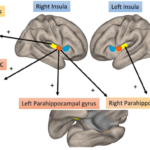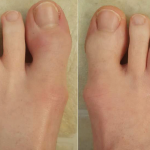As indicated by the data, FM can be found in about 20% of patients with PsA and is associated with higher disease activity and worse quality of life. The 20% frequency is similar to that found in other rheumatic diseases and far greater than the general population; these findings suggest some common mechanisms, possibly related to inflammation or the other effects of chronic illness. The impact of cultural factors is not yet clear although more observations from different countries and regions could provide insights.
Certainly, the findings suggest the importance in routine care of a more comprehensive evaluation for FM in patients with PsA; this evaluation could involve validated screening tools similar to those used in this study. In the trial setting, assessing the impact of therapies on FM symptoms could provide unique information that could be applied to other rheumatic diseases.
4. Cigarette Smoking & Radiographic Progression
Abstract 1436: Kharouf et al.4
Smoking has so many adverse health effects that an association with worse outcomes in PsA would not be unexpected especially because smoking has been linked to greater radiologic damage in RA. Kharouf et al. therefore investigated a large population of patients with PsA in a prospective, observational cohort assessing a number of clinical variables in non-smokers, past smokers and current smokers. The results indicated that a shortened time to progression of radiographic joint damage occurred with older age, shorter duration of psoriasis, baseline swollen joint joints, baseline dactylitis and an abnormal erythrocyte sedimentation rate.
Interestingly, current smokers showed less progression of peripheral joint damage. Smoking is part of the, so-called, exposome that represents the environmental influences to which an individual is exposed. Constituents of the exposome can impact on immunological process, showing both pro-inflammatory and anti-inflammatory effects. Among other diseases, studies have indicated that smoking may protect against ulcerative colitis (UC) in contrast to Crohn’s disease. The effect of smoking on UC has been variously attributed to the action of nicotine and carbon monoxide, although many other mechanisms, including epigenetic changes, are possible.
Although much research is needed to disentangle the effects of smoking, nevertheless, this study provides intriguing clues to the ways in which environmental exposures can affect disease—with differential effects on PsA and RA, providing further evidence for the distinct pathophysiologies of these conditions.
5. Calcium Pyrophosphate Deposition Disease & PsA
Abstract 2311: Anumolu et al.5
The diagnosis of PsA is not always straightforward, even in patients with psoriasis because PsA can coexist with osteoarthritis (OA) and RA. In the absence of a definitive biomarker, the diagnosis of PsA is clinical. The study by Anumolu et al. explores the relationship between calcium pyrophosphate deposition disease (CPPD) and PsA using a large patient cohort from the Veteran Affairs database, comparing CPPD patients with a matched population of controls.



